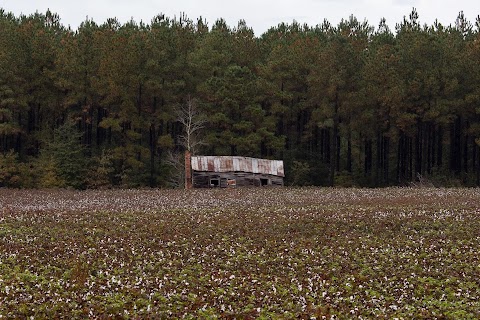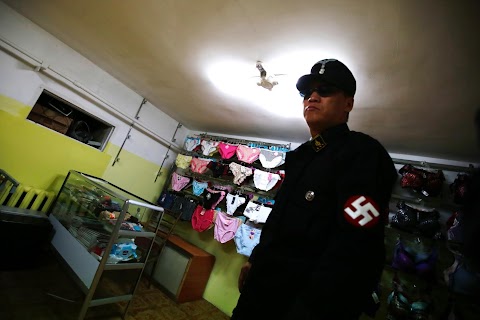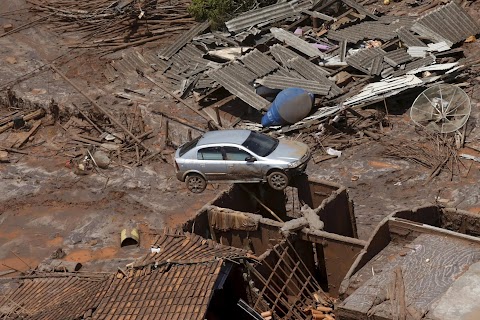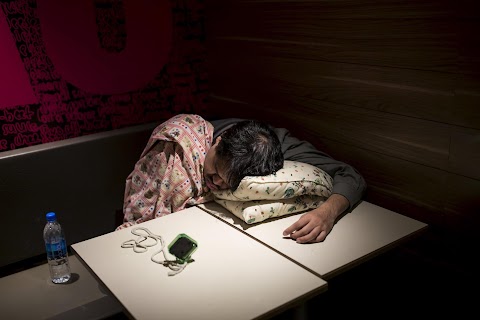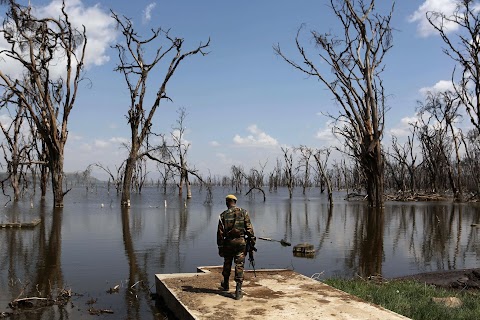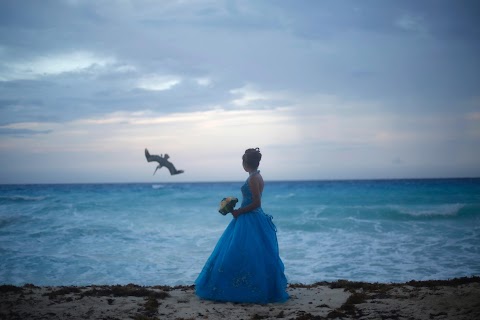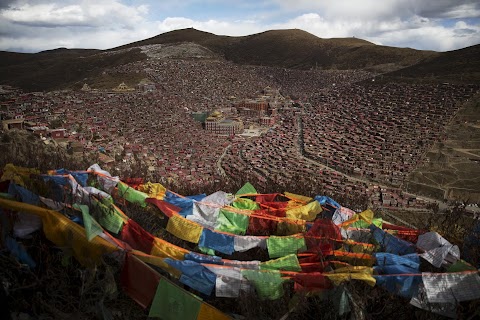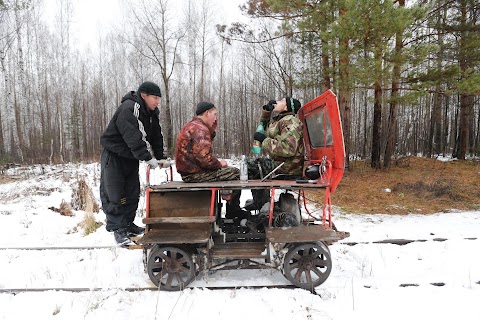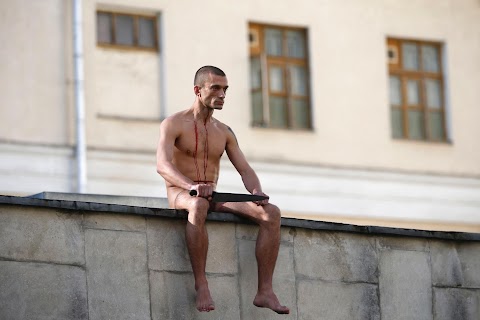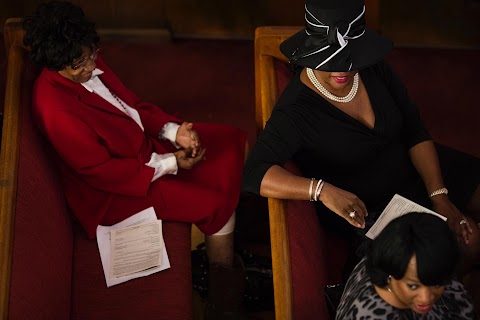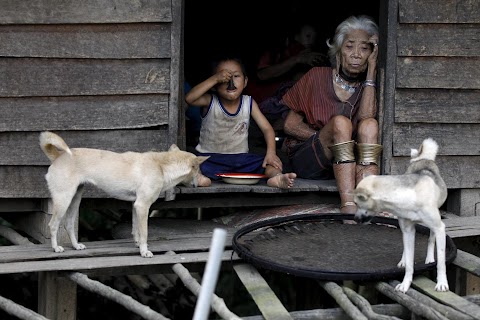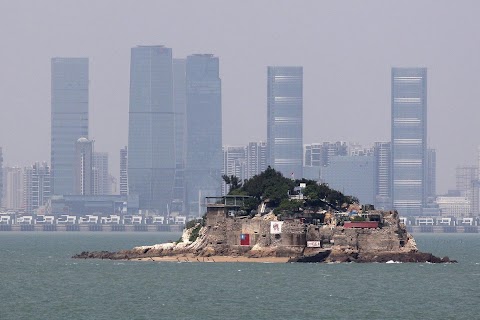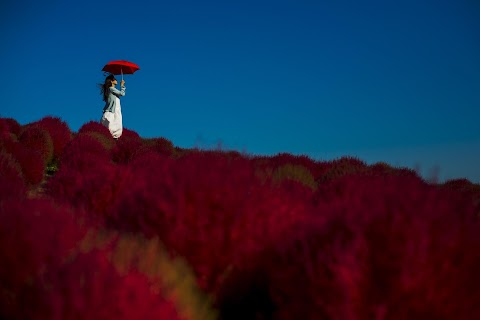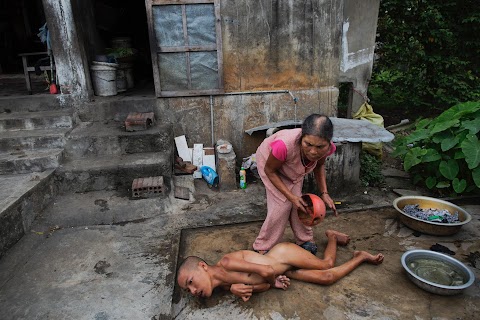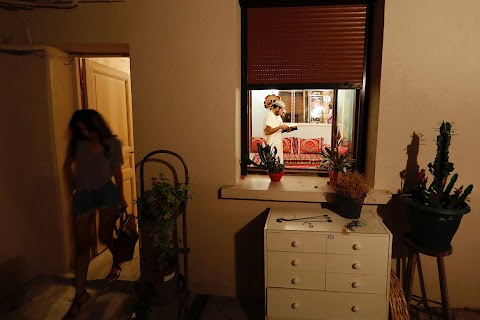
Life as a Muslim in Paris
 Youssef Boudlal
Youssef Boudlal
This story was first published in 2013.
A brightly lit window offers a glimpse of Lahcen, a 41-year-old Moroccan migrant, as he prays at his home in Paris during the Muslim holy month of Ramadan.
He is one of millions of Muslims living in France, which is home to the largest Islamic minority in Europe. But the strictly secular country has struggled to assimilate this population, mostly made up of descendants of immigrants from ex-colonies, who often feel shut out of mainstream society and jobs.

Lahcen takes a photo of himself in the Paris suburb of Mantes-la-Jolie. He has been living in the French capital for ten years now, and says that practicing Islam in France is becoming increasingly difficult.
He is concerned by laws that affect Muslims in the country, such as a ban on the full-face veil being worn in public. "The law is an attempt to create an Islam that the French can accept," he said.

Chehrazad is a Muslim woman of Moroccan origin who lives in Mantes-la-Jolie and is directly affected by such legislation.
The 36-year-old works as a secretary in a notary's office, where she has to remove her headscarf due to a law banning their use in the civil service.
Slideshow

High-rise apartment blocks are seen in Choisy-le-Roi, part of the Parisian suburbs which are home to a large Muslim population.

Muslims queue up to buy traditional sweets for their first Iftar meal, used to break their fast after sundown during the Muslim holy month of Ramadan.

Chehrazad leaves work at a Parisian notary's office, where she is not able to wear her headscarf.

She shops for bread at a market in the Parisian suburb of Mantes-la-Jolie.

She walks down a street in the suburb.

Chehrazad looks at clothes while out shopping.

She talks on the phone outside a shop.

Chehrazad prays in her Mantes-la-Jolie apartment.

She walks towards a mosque in the suburb.

Hamza, 28, an unemployed immigrant from Algeria points at a picture of a ship that reminds him of his journey to Paris.

Lahcen works at a fruit and vegetable stall in Aligre Market, Paris.

People shop for produce at the market.

A woman wearing a headscarf walks down a street in Paris.

Muslims pray during Ramadan.

Lahcen walks past a group of Muslim women at a metro station.

He waits to cross a busy street lit up at night.

Lahcen talks to fellow worshippers outside a mosque.

Wearing a T-shirt with an explicit slogan, Lahcen prepares his breakfast at home during Ramadan.

Lahcen reads the Koran in his home.

He cups his palms together as he prays.
"Stereotypes and prejudices are strong and there is a real fear of images. What will you do with them? How will you use them? To what ends?"
Photographing the daily life of Muslims in Paris is a challenge. I discovered this by throwing myself into the project, which rapidly became a story of failed encounters, rejection and disappointment. Among the people I met, the fear of prejudice towards the Muslim world was intense, as was the worry that cliches about the community could be fuelled or spread by images.
I met a good number of people as part of my investigation. The first few were in the suburbs of Paris, home to a large Muslim community.
In Vitry-sur-Seine, I met four twenty-somethings of North African origin sitting outside a church. I explained my project to them and their suspicions were quickly aroused. I was asked about my job, the reasons for my project and why I was interested in them. They worried about how my images would be used. One of them took me for a spy.
Another encounter, this time at Mantes-la-Jolie, among Paris’s western suburbs. Here, a young woman in a headscarf was buying fruit and vegetables at the Val Fourre market and I decided to approach her. I explained my project in detail, and asked if she wanted to take part. She displayed no enthusiasm but no scepticism either, to the point that she went to ask permission from her father, a butcher she was helping for the season. I was already picturing images of this contrast. But he refused, without explanation. My arguments couldn’t sway him.
A contact put me in touch with a Salafist – a follower of a strict kind of Sunni Islam – who prayed with others in a garage at Mantes-la-Jolie. The originality of the place cried out to me. I met him, we talked through a week of long negotiations and he said the project was possible. But that was before the end of June, when the arrest of six suspected Islamists in the Ile-de-France region made the meeting difficult. In the end, I wasn’t allowed to photograph either the people or the place.
Another contact put me in touch with Chehrazad, 36, a Muslim woman of Moroccan origin, who is employed at a public notary’s office and normally wears a headscarf, but is now forced to remove it due to a law banning headscarves in the civil service.
Her French husband agreed that I could follow her life for a day. I went with her to the market, to her work and home. For her, covering her head was a case of individual choice: “Wearing the veil is a personal desire to protect my modesty,” she told me.
Still in Mantes-la-Jolie, I met a French woman wearing a headscarf who was a convert to Islam. When I explained my project to her, she seemed keen to show her everyday life and arranged a meeting near her house over the phone. But when her husband arrived he refused to let me photograph his wife. I left disappointed and empty-handed. It was no longer a question of religion, but of culture.
With so little luck in the suburbs, I turned to Paris itself. At the capital’s Aligre market, I ran into Lahcen, a practicing Muslim. I know him well – he’s my grocer. I explained my project and he opened his door to me with a smile. I followed his everyday life, from his home to the mosque to his work.
Lahcen says practicing Islam in France is becoming more and more difficult, and that French laws specifically target Muslims, such as a ban on the full-face veil being worn in public. "The law is an attempt to create an Islam that the French can accept," he said.
I tried to use Ramadan as an opportunity to take photographs inside a mosque of men praying, but I was forbidden. And yet, I am Muslim, I speak Arabic. I thought that this cultural and religious proximity would have made an exchange easier. I was wrong.
Stereotypes and prejudices are strong and there is a real fear of images. What will you do with them? How will you use them? To what ends? Everyone I met was worried about the image and its propagation.
In the age of social media, there is a fear of misinformation. I wanted to fight cliches, but how can you start when no one will open their door to you? This subject needs time, patience, perseverance and willpower. Even with all that, you’re not guaranteed success.
There are five million Muslims in France, and there are plenty of reasons why they might feel afraid or suspicious. France is strictly secular and has struggled to integrate its Islamic population. Many feel alienated by the last government’s decision to ban face veils in public, and by a law banning headscarves in school.
According to the Committee against Islamophobia in France, anti-Muslim incidents have been on the rise in recent years. Just this month, a soldier was arrested in Lyon on suspicion of planning to shoot at a mosque during the Muslim holiday of Eid al-Fitr.
From the ban on the full veil, to the incident of Mohammed Merah, an Islamist who killed seven people stereotypes surrounding the Muslim world abound here. In this climate, documenting the lives of France’s Muslims is difficult to say the least.
